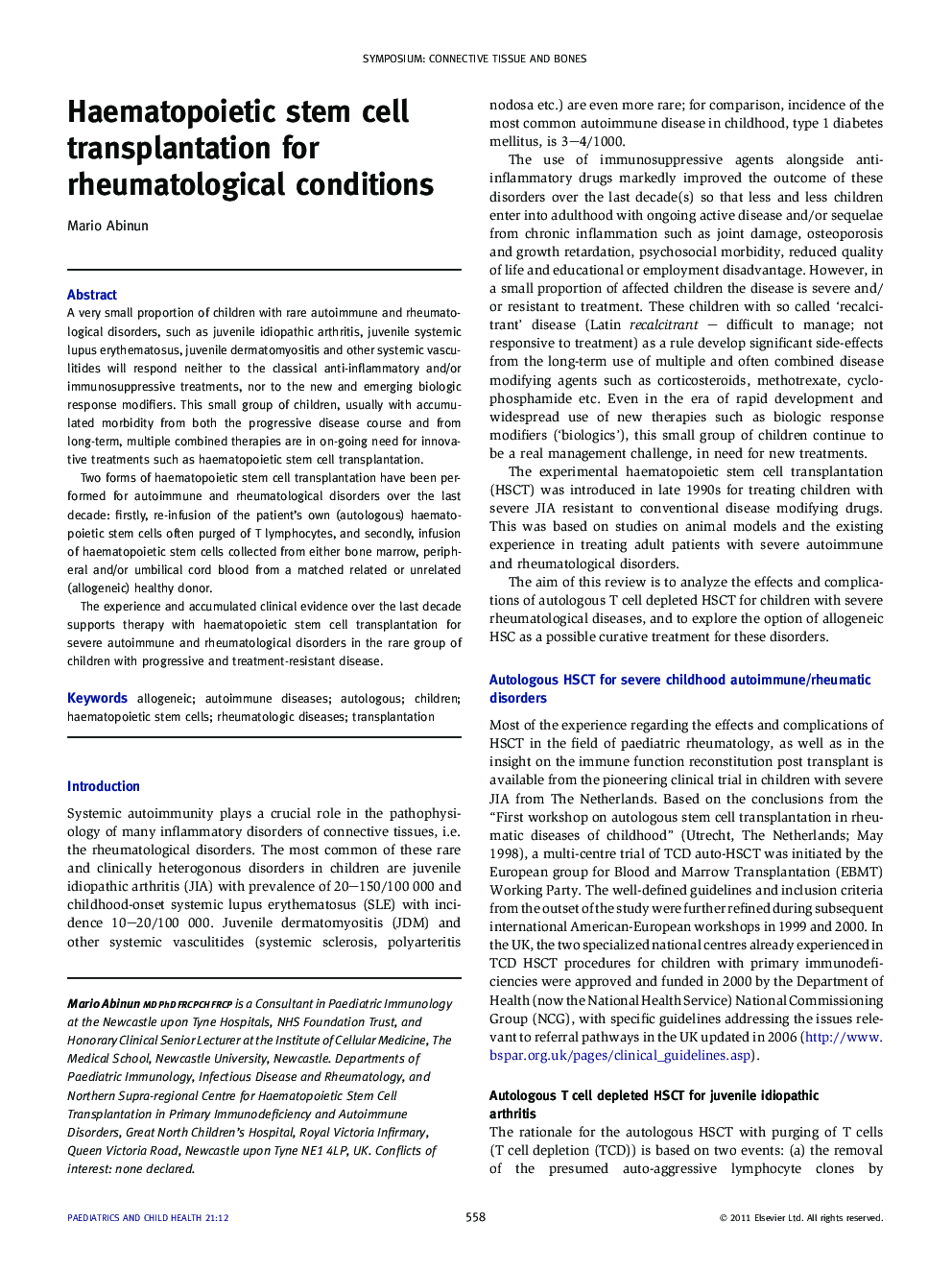| کد مقاله | کد نشریه | سال انتشار | مقاله انگلیسی | نسخه تمام متن |
|---|---|---|---|---|
| 4172576 | 1275759 | 2011 | 5 صفحه PDF | دانلود رایگان |

A very small proportion of children with rare autoimmune and rheumatological disorders, such as juvenile idiopathic arthritis, juvenile systemic lupus erythematosus, juvenile dermatomyositis and other systemic vasculitides will respond neither to the classical anti-inflammatory and/or immunosuppressive treatments, nor to the new and emerging biologic response modifiers. This small group of children, usually with accumulated morbidity from both the progressive disease course and from long-term, multiple combined therapies are in on-going need for innovative treatments such as haematopoietic stem cell transplantation.Two forms of haematopoietic stem cell transplantation have been performed for autoimmune and rheumatological disorders over the last decade: firstly, re-infusion of the patient’s own (autologous) haematopoietic stem cells often purged of T lymphocytes, and secondly, infusion of haematopoietic stem cells collected from either bone marrow, peripheral and/or umbilical cord blood from a matched related or unrelated (allogeneic) healthy donor.The experience and accumulated clinical evidence over the last decade supports therapy with haematopoietic stem cell transplantation for severe autoimmune and rheumatological disorders in the rare group of children with progressive and treatment-resistant disease.
Journal: Paediatrics and Child Health - Volume 21, Issue 12, December 2011, Pages 558–562